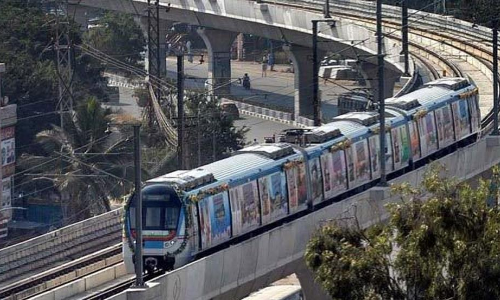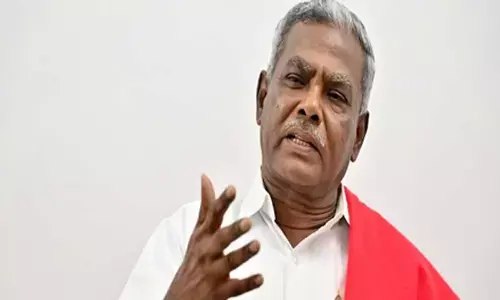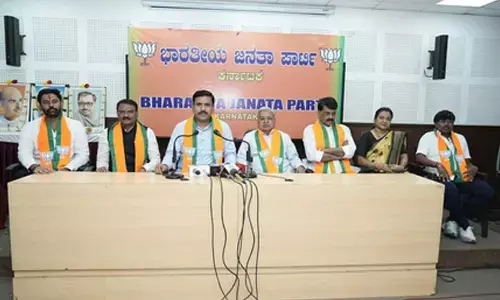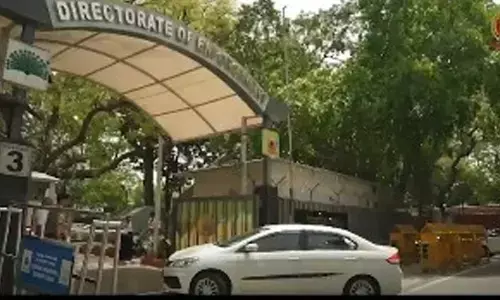Metro rail impact on Hyderabad so far

With 12 million plus people, Hyderabad is the fourth most populous city in India and has evergrowing traffic The city has 28 million vehicles registered in the Hyderabad Metro area alone with nearly 1000 vehicles added every day
With 12 million plus people, Hyderabad is the fourth most populous city in India and has ever-growing traffic. The city has 2.8 million vehicles registered in the Hyderabad Metro area alone with nearly 1000 vehicles added every day.
Hyderabad Metro Rail was launched amidst heavy fanfare by Prime Minister Narendra Modi following which the commercial operations began from November 29, 2017.
The 30 km-long first phase of the metro rail project between Miyapur and Nagole was launched with the entire phase due to be completed by December 2018.
The Metro Rail received an overwhelming response on the inaugural day with over 200,00 people using the service. Currently, the daily ridership of Metro is about 80,000, as announced by Municipal Administration and Urban Development Minister KT Rama Rao.
Also Read:HMRL to develop ‘Heritage Precinct’
While the Metro projects have been brought into existence in a bid to reduce the amount of traffic of the cities’ roads, the extent of impact majorly depends on the availability of feeder services and a robust public transport system.
In terms of Hyderabad, the traffic has reduced although marginally but the entire statistics will be open for evaluation when the entire system is put into service. Particularly, when high-density areas such as Hitech City, where a major concentration of IT firms are located and would account for substantial traffic flow are remaining to be connected to the Metro network.
According to the statistics shared on the video screens installed at the stations, in its first 100 days, HMR has recorded over 80 lakh passengers utilising the services, over 10.2 lakh kilometres completed operations and 36,186 train trips.
A decline was witnessed in ridership following the inaugural month which speculated that the HMR was a failure. However, as the Metro Rail is yet to be operational in all the routes, which is expected to bring in a boost in the ridership.
Even when the Bengaluru Metro Rail became operational in 2011, it began with 5000 to 10,000 riders per day nut the ridership has increased to an extent that the current ridership is 3.5 lakhs per day. The Metros in Chennai, Lucknow and Kochi also witnessed the same phenomena.
In the recent months, the daily ridership average has been 75,000 which can be considered a commendable response from the public.
Also Read:HMR to install waterless urinals at Metro Stations
Let’s dwell into the pros and cons the Metro Rail has so far offered -
Pros -
With approximately 800 new vehicles being added every in the city, the Metro Rail is not just offering a comfortable transport system for the public but also is reducing the automobile emission levels.
No hectic traffic snarls.
In terms of space occupancy, energy consumption, eco-friendly, Metro Rail has turned out to be most efficient.
Reduces travel time by 50 to 75 percent.
Well organised man movement and safety levels.
Cons -
More number of stops between the stations.
Lack of sufficient parking lots.
High ticket price.
Also Read:More Eco-friendly urinals coming up at Hyderabad Metro stations
Ticket prices:
Below are the ticket costs:
Distance travelled - Fare
Up to 2 km - Rs 10
More than 2 km and up to 4 km - Rs 15
More than 4 km and up to 6 km - Rs 25
More than 6 km and up to 8 km - Rs 30
More than 8 km and up to 10 km - Rs 35
More than 10 km and up to 14 km - Rs 40
More than 14 km and up to 18 km - Rs 45
More than 18 km and up to 22 km - Rs 50
More than 22 km and up to 26 km - Rs 55
More than 26 km - Rs 60
The minimum ticket fare is priced at Rs 10 and the maximum at Rs 60 which evoked mixed responses from the public. Many opined that Hyderabad Metro fares are bit high compared to all other transportation. If you compare to the other transport services, the base fare in an ordinary bus is Rs 6, Metro Services - Rs 8 and MMTS fares Rs 5 for 15 Km.
However, MMTS covers only two stretches which may often result in delayed services particularly in big stations such as Secunderabad and Kacheguda. Also, considering a 30km distance time taken by the bus, it is about 150 minutes whereas in Metro it is around 60 minutes.
Also Read:Metro corridors to give connectivity to airport from all corners of Hyderabad
Next Phase -
Meanwhile, the LB Nagar-Ameerpet Metro stretch of Hyderabad Metro Rail Limited (HMRL) is set to be open to the public by July-end while the second phase of HMR - LB Nagar-Ameerpet Metro Corridor Rail will get started in August first week.
With the feeder systems including cab, bike services and rentals along with multi-level parking complexes being put into effect for the Metro network, the approach to transport in Hyderabad might witness a substantial impact once the entire stretch of planned Metro is opened.
Also Read:KTR: LB Nagar-Ameerpet Metro open to public by July



















